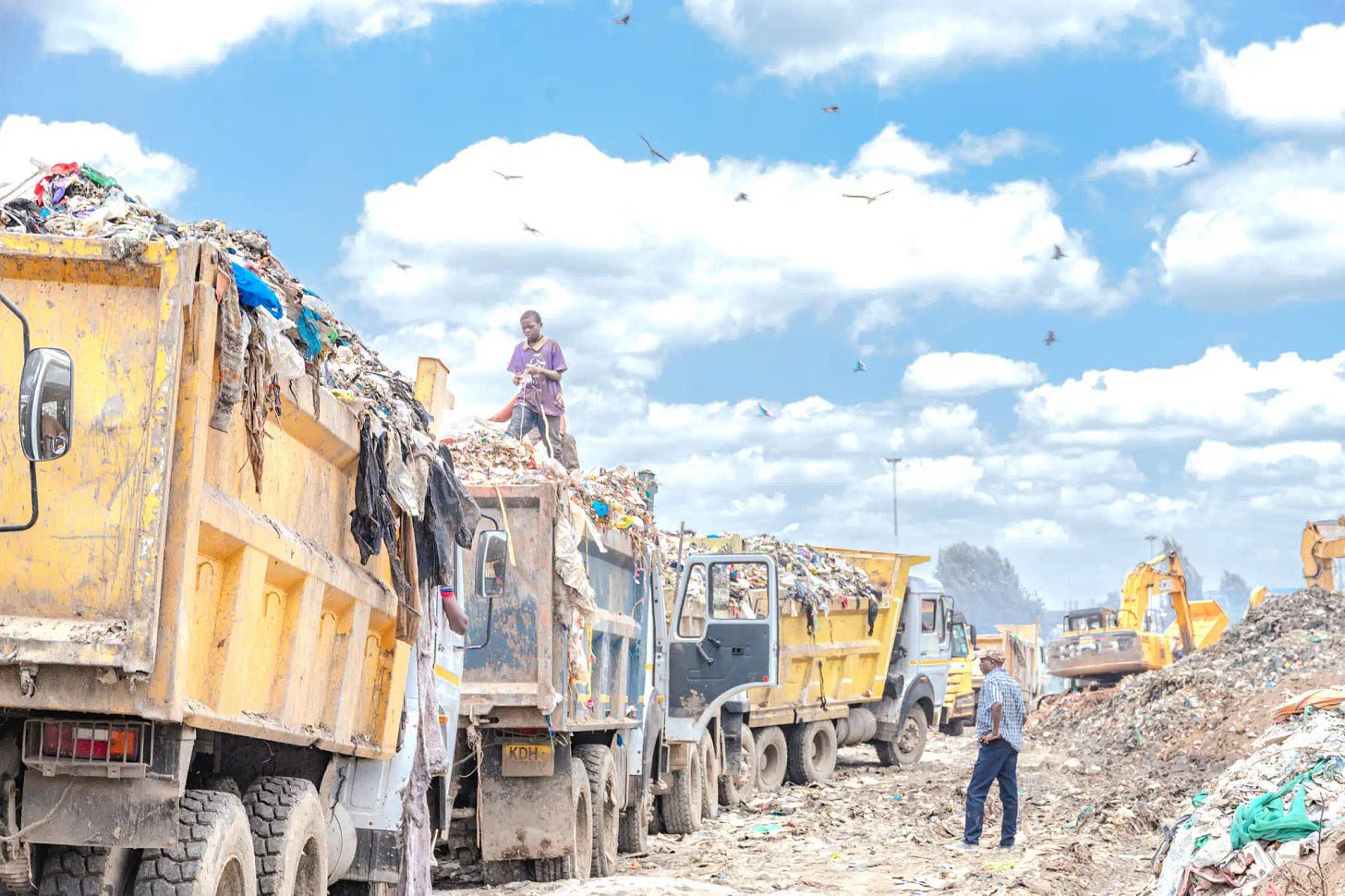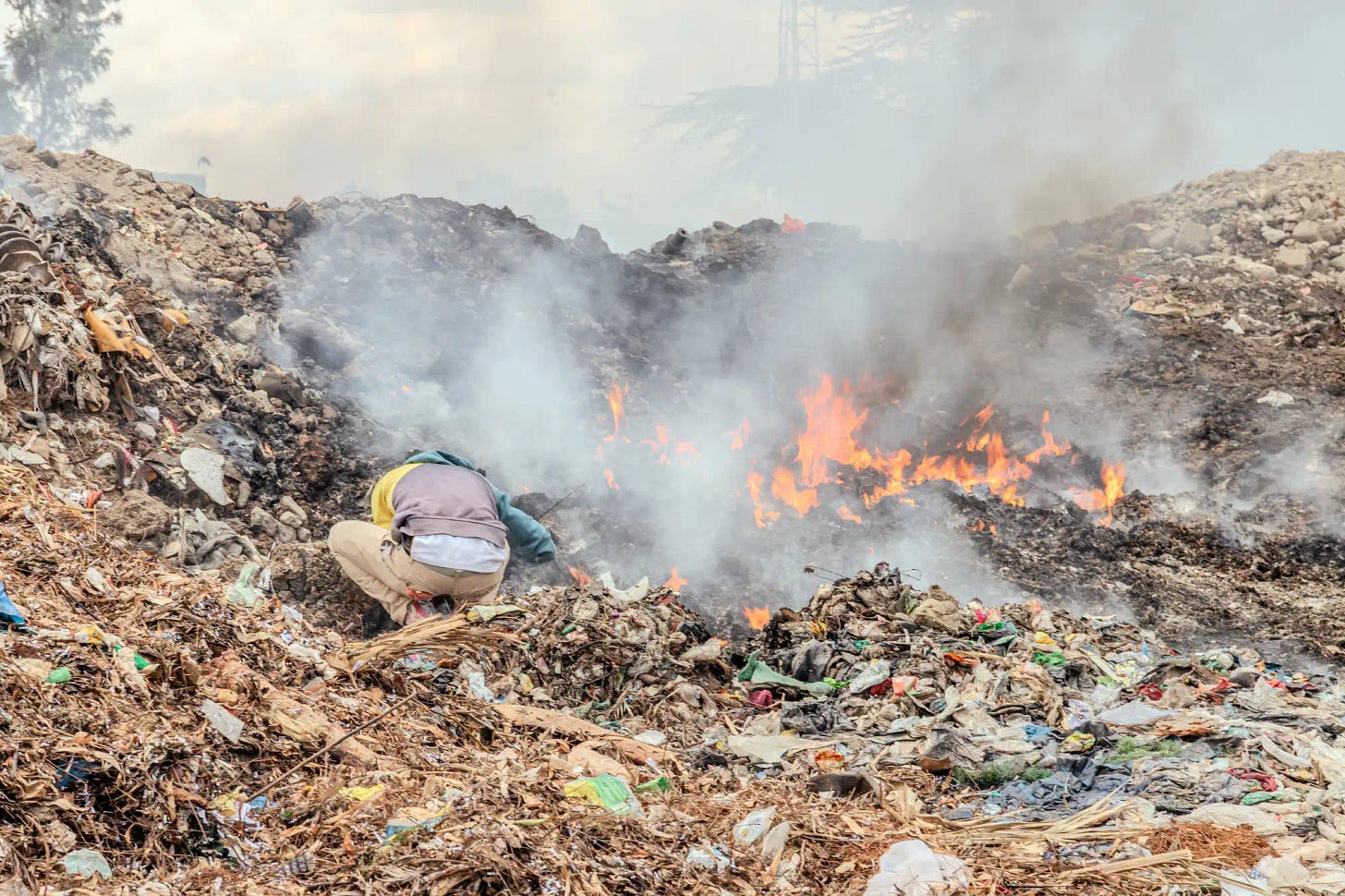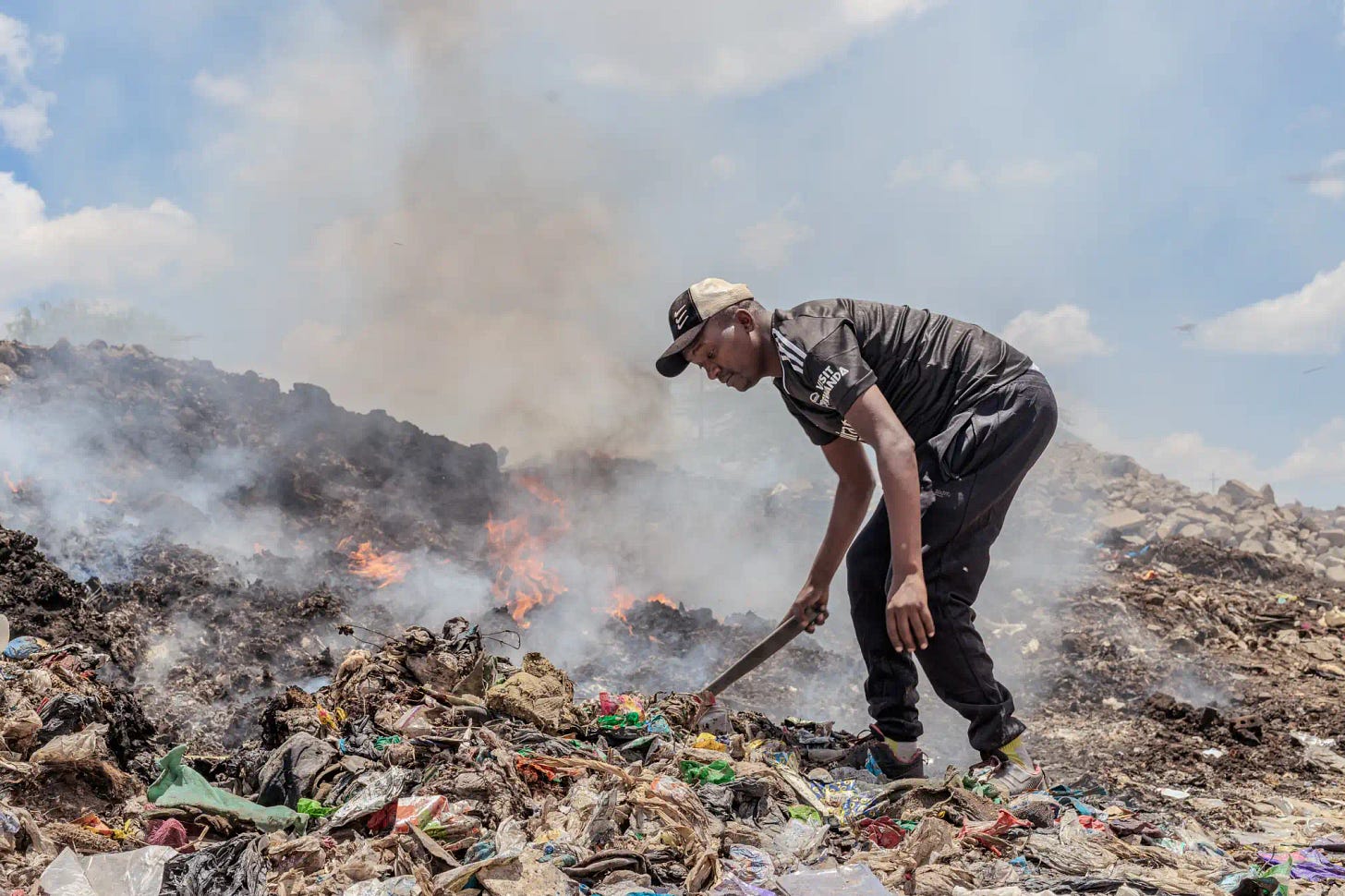“Throw it Away.”
But where is ‘away’?
We all say it.
“Throw it away.”
That shirt.
That dress.
That old pair of fast fashion jeans.
But where, exactly, is away?
📍 Dandora Landfill, Nairobi.
East Africa’s largest dumping ground.
A mountain of global fashion waste.
Built one donation, one return box, one impulse buy at a time.
This is where “away” ends up.
What Happens to the Clothes We Donate?
Here’s what we were told:
“Don’t throw clothes in the bin. Donate them.”
“Drop them off at the big brand’s take-back box.”
“Let’s recycle. Let’s be responsible.”
But here’s the truth:
12 million pieces of used clothing from the UK alone end up in Kenya every year.
Most of it is low-quality plastic fiber.
Much of it is so damaged, stained, or contaminated — it's dumped or burned on arrival.
What was marketed as “circularity”
has turned into waste colonialism.
Dandora: A Global Consequence Hidden in Plain Sight
Images from the Clean Up Kenya team show towering textile dumps — some the height of four-story buildings — next to primary schools.
Piles of unwearable clothing spill into rivers.
30% of them are made entirely of plastic.
H&M, Nike, and Yves Saint Laurent tags float in the toxic soup.
Even worse?
Clothes are reportedly burned to heat water, cook food, or even fuel small power plants.
Imagine wearing polyester and realizing…
it might end up burned for energy in someone else’s backyard.
The Circular Illusion
This is the part that hurts the most:
Brands advertise “take-back programs.”
NGOs position themselves as saviors of textile waste.
Plastic-heavy garments are promoted as “eco” because they contain 14% PET-bottle polyester.
Meanwhile, the reality on the ground?
Ragpickers in Nairobi are opening bales to find:
🧼 Clothes soiled with vomit.
🐾 Pet hair and heavy stains.
🧺 Fabric blends that cannot be recycled.
This isn’t sustainability.
It’s laundering — in both senses of the word.
Some Facts That Should Shock Us
Only 1% of clothing is recycled into new garments.
100 billion pieces of clothing are produced every year.
Over 50% of all clothing contains synthetic plastic fibers.
Europe’s largest exporters of textile waste to Kenya? Germany, Poland, and the UK.
And on average?
🧥 Each Kenyan receives 17 second-hand garments every year.
🗑️ Up to 8 of those are immediately useless.
This Is Not a Kenya Problem
This is not a donation problem.
This is not even a second-hand problem.
It’s a supply chain failure.
When fast fashion uses plastic to mass-produce disposable garments…
When “donation” becomes the final step in the customer journey…
When charities and recyclers ship waste to the Global South to protect Western reputations…
We don’t have a recycling system.
We have a global waste displacement machine.
What Needs to Change
No, we don’t need to shut down second-hand markets.
But we do need to overhaul them.
🔁 Brands must design with recycling and reuse in mind
🚫 Plastic-heavy clothing should be taxed or banned
📊 Trade law must close the loopholes on “hidden” waste exports
💬 Consumers should stop believing every green sticker they see
📦 EPR (Extended Producer Responsibility) should apply to fashion — globally
And most importantly:
🧹 The burden of “cleaning up” should never fall on the countries least responsible for the mess.
Final Thought
You can’t unsee Dandora.
Once you know where “away” is,
you begin to shop, donate, and design differently.
This isn’t about guilt.
It’s about honesty.
Because until we make waste visible,
we can’t make fashion sustainable.
PS:
Want to support real circularity? Support people building upstream — not those offloading downstream.
📩 Forward this post to someone who still thinks donations = sustainability.
♻️ Repost if you believe circularity should start with truth.






